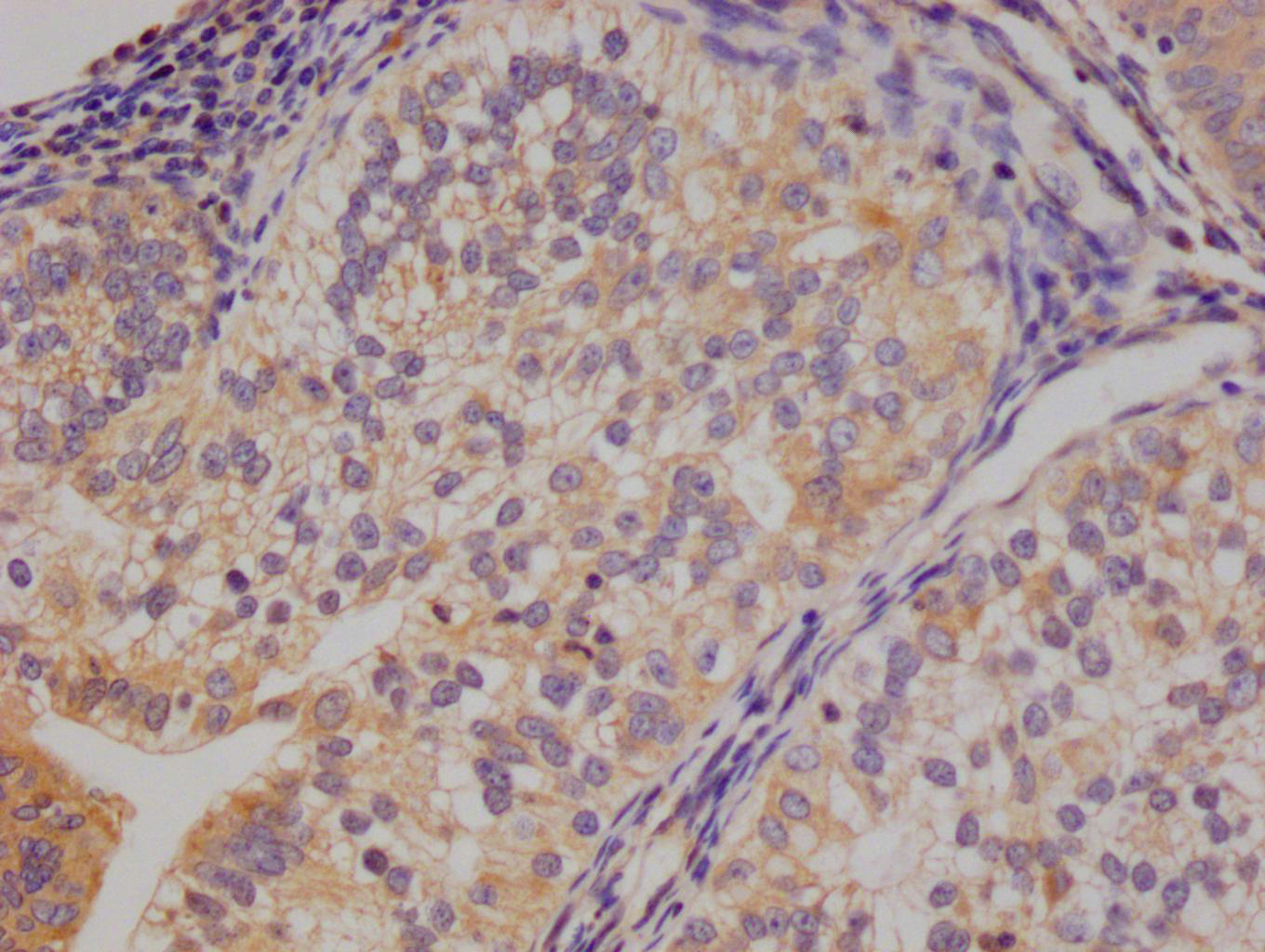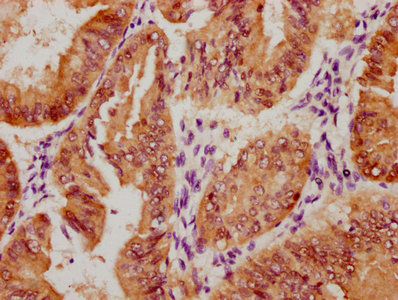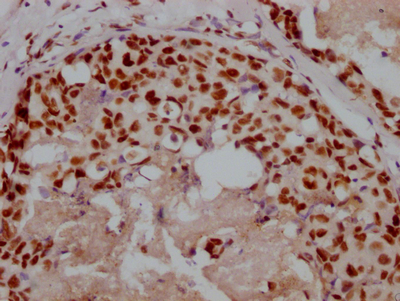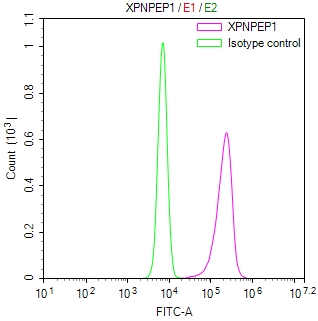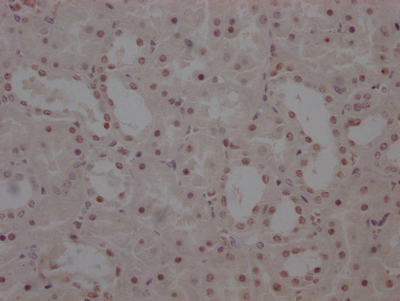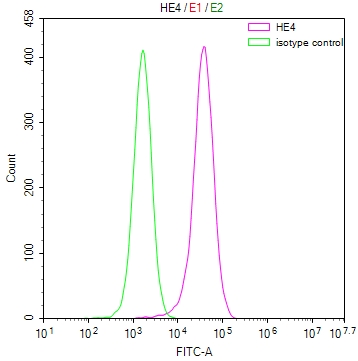PTPRK Antibody, FITC conjugated
-
中文名稱(chēng):PTPRK兔多克隆抗體, FITC偶聯(lián)
-
貨號(hào):CSB-PA613588LC01HU
-
規(guī)格:¥880
-
其他:
產(chǎn)品詳情
-
產(chǎn)品名稱(chēng):Rabbit anti-Homo sapiens (Human) PTPRK Polyclonal antibody
-
Uniprot No.:
-
基因名:PTPRK
-
別名:dJ480J14.2.1 antibody; DKFZp686C2268 antibody; DKFZp779N1045 antibody; OTTHUMP00000017180 antibody; OTTHUMP00000017181 antibody; OTTHUMP00000017182 antibody; OTTHUMP00000017187 antibody; OTTHUMP00000040306 antibody; Protein tyrosine phosphatase kappa antibody; Protein tyrosine phosphatase kappa precursor antibody; Protein tyrosine phosphatase receptor type K antibody; Protein tyrosine phosphatase receptor type kappa antibody; Protein-tyrosine phosphatase kappa antibody; PTPK antibody; PTPkappa antibody; Ptprk antibody; PTPRK_HUMAN antibody; R PTP kappa antibody; R-PTP-kappa antibody; Receptor type tyrosine protein phosphatase kappa antibody; Receptor-type tyrosine-protein phosphatase kappa antibody
-
宿主:Rabbit
-
反應(yīng)種屬:Human
-
免疫原:Recombinant Human Receptor-type tyrosine-protein phosphatase kappa protein (589-749AA)
-
免疫原種屬:Homo sapiens (Human)
-
標(biāo)記方式:FITC
-
克隆類(lèi)型:Polyclonal
-
抗體亞型:IgG
-
純化方式:>95%, Protein G purified
-
濃度:It differs from different batches. Please contact us to confirm it.
-
保存緩沖液:Preservative: 0.03% Proclin 300
Constituents: 50% Glycerol, 0.01M PBS, pH 7.4 -
產(chǎn)品提供形式:Liquid
-
儲(chǔ)存條件:Upon receipt, store at -20°C or -80°C. Avoid repeated freeze.
-
貨期:Basically, we can dispatch the products out in 1-3 working days after receiving your orders. Delivery time maybe differs from different purchasing way or location, please kindly consult your local distributors for specific delivery time.
-
用途:For Research Use Only. Not for use in diagnostic or therapeutic procedures.
相關(guān)產(chǎn)品
靶點(diǎn)詳情
-
功能:Regulation of processes involving cell contact and adhesion such as growth control, tumor invasion, and metastasis. Negative regulator of EGFR signaling pathway. Forms complexes with beta-catenin and gamma-catenin/plakoglobin. Beta-catenin may be a substrate for the catalytic activity of PTPRK/PTP-kappa.
-
基因功能參考文獻(xiàn):
- PTPRK was identified as a direct target of miR-1260b, and PTPRK expression was inversely correlated with miR-1260b in non-small cell lung cancer cell lines and clinical tissues PMID: 29628123
- Study found a significant association between PTPRK genetic variants and the risk and age at onset of Alzheimer's disease in two independent samples, and provided initial evidence of several genetic variants in PTPRK influencing the risk of cancer and cholesterol levels. PMID: 28987514
- The present study identified RSPO fusion transcripts, including three novel transcripts, in one-third of colorectal Traditional serrated adenoma (TSA) and showed that PTPRK-RSPO3 fusions were the predominant cause of RSPO overexpression in colorectal TSA. PMID: 28543708
- PTPRK plays dual roles in coordinating angiogenesis. It plays a positive role in cell proliferation, adhesion and tubule formation, but suppresses cell migration, in particular, the FGF-promoted migration. PMID: 28259897
- PTPRK-RSPO3 fusions and RNF43 mutations were found to be characteristic genetic features of traditional serrated adenomas (TSAs). PMID: 26924569
- By regulating phosphorylation of SRC, RPTPkappa promotes the pathogenic action of rheumatoid arthritis fibroblast-like synoviocytes, mediating cross-activation of growth factor and inflammatory cytokine signalling by TGFbeta in RA FLS. PMID: 25378349
- Notch and TGF-beta act in concert to stimulate induction of PTPRK, which suppresses EGFR activation in human keratinocytes. PMID: 25609089
- Findings strongly indicate that the tyrosine phosphorylation of CD133, which is dephosphorylated by PTPRK, regulates AKT signaling and has a critical role in colon cancer progression. PMID: 24882578
- PTPRK underexpression leads to STAT3 activation and contributes to nasal NK/T-cell lymphoma pathogenesis PMID: 25612622
- PTPRK showed lower mRNA expression in duodenal mucose of celiac disease patients. PMID: 23820479
- High expression of PTPRK is associated with prostate cancer. PMID: 24002526
- Tumor derived mutations of protein tyrosine phosphatase receptor type k affect its function and alter sensitivity to chemotherapeutics in glioma. PMID: 23696788
- PTPRK is a negative regulator of adhesion, invasion, migration, and proliferation of breast cancer cells. PMID: 23552869
- PTPkappa was scissored by the processed form of proprotein convertase 5, and galectin-3 binding protein which is over-produced in colon cancer cells and tissues. PMID: 21094132
- These data describe a novel mechanism of cross-talk between EGFR and TGF-beta pathways, in which RPTP-kappa functions to integrate growth-promoting and growth-inhibiting signaling pathways. PMID: 19864455
- Our results suggest that GnT-V could decrease human hepatoma SMMC-7721 cell adhesion and promote cell proliferation partially through RPTPkappa. PMID: 19911372
- RPTP-kappa is a key regulator of EGFR tyrosine phosphorylation and function in human keratinocytes PMID: 16263724
- the crystal structure of catalytically active, monomeric D1 domain of RPTPkappa at 1.9 A. RPTPkappa is monomeric in solution and crystal structure. PMID: 16672235
- EGF receptor is activated in human keratinocytes by oxidative inhibition of receptor-type protein-tyrosine phosphatase kappa by ultraviolet irradiation PMID: 16849327
- EBNA1 apparently disables TGF-beta signaling, which subsequently decreases transcription of the PTPRK tumor suppressor PMID: 17720884
- PTPRK influences transactivating activity of beta-catenin in non-tumoral and neoplastic cells by regulating the balance between signaling and adhesive beta-catenin, thus providing biochemical basis for the hypothesis of PTPRK as a tumor suppressor gene. PMID: 18276111
- overexpression of GnT-V in a hepatoma cell line not only induced the addition of beta1,6 GlcNAc branch to N-glycan of RPTPkappa but also decreased the protein level of RPTPkappa PMID: 19236842
- These data indicate that PPTRK positively regulates ERK1/2 phosphorylation, which impacts CD4(+) T cell development. PMID: 19800317
顯示更多
收起更多
-
亞細(xì)胞定位:Cell junction, adherens junction. Cell membrane; Single-pass type I membrane protein.
-
蛋白家族:Protein-tyrosine phosphatase family, Receptor class 2B subfamily
-
組織特異性:High levels in lung, brain and colon; less in liver, pancreas, stomach, kidney, placenta and mammary carcinoma.
-
數(shù)據(jù)庫(kù)鏈接:
Most popular with customers
-
-
Phospho-YAP1 (S127) Recombinant Monoclonal Antibody
Applications: ELISA, WB, IHC
Species Reactivity: Human
-
-
-
-
-
-


